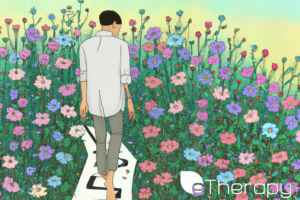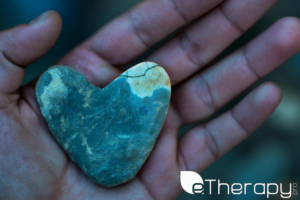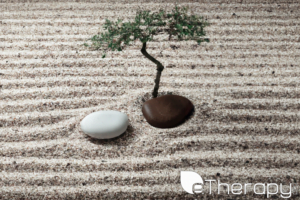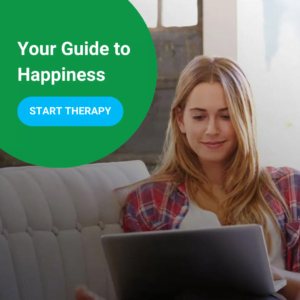
In today’s fast-paced, demanding world, finding time to breathe and reflect can seem like a luxury. But mindfulness isn’t only reserved for those with time to spare; it’s a practical tool that anyone can use.
In today’s rush, we all think too much — seek too much — want too much — and forget about the joy of just being. – Eckhart Tolle
What Is Mindfulness?
Mindfulness is the practice of being fully present and engaged in the current moment. It’s about accepting thoughts and feelings without judgment. While commonly associated with meditation, mindfulness is much more flexible. It can be integrated into daily routines, making it accessible for busy people.
Misconceptions About Mindfulness
The belief that mindfulness requires hours of quiet reflection is a misconception. While extended periods of meditation can be beneficial, mindfulness can also be practiced in small, manageable moments throughout the day.
Benefits of Mindfulness for the Busy Bee
Incorporating mindfulness into a hectic life can lead to noticeable improvements in both mental and physical well-being.
Reducing Stress
Mindfulness teaches you to focus on the present, releasing worries about future uncertainties or past regrets. This practice can significantly reduce stress levels, leading to a more relaxed and balanced life.
Improving Concentration
Regular mindfulness practices can train your brain to concentrate more effectively. By learning to ignore distractions, you can become more productive and efficient in your daily tasks.
Enhancing Emotional Well-being
Mindfulness encourages a compassionate and non-judgmental outlook. It helps you develop a better understanding of your emotions, boosting your overall mood and outlook on life.
Improving Physical Health
Believe it or not, mindfulness can also improve physical health. Studies have shown that it can lower blood pressure, enhance sleep quality, and even alleviate symptoms of chronic illnesses.
Quick Mindfulness Techniques for the Time-Pressed
Even if you’re swamped, the following practices can easily fit into your schedule:
One-Minute Breathing
A simple exercise like deep breathing can be incredibly calming. By taking a minute to inhale deeply and exhale slowly, you can center yourself, reducing anxiety and boosting concentration.
Mindful Eating
Mindful eating involves fully experiencing your food—savoring every bite, appreciating the flavors, and being grateful for the nourishment. It can transform mealtime into a joyful and satisfying experience.
The Five Senses Exercise
When you feel overwhelmed, ground yourself by observing your surroundings using all five senses. This technique can help you reconnect with the present moment, easing stress and bringing clarity.
The Two-Minute Walk
A brief walk with mindfulness can be a powerful reset button for your mind. By concentrating on each step, you can clear mental clutter and regain focus.
Daily Gratitude Journaling
Keeping a daily gratitude journal can foster a positive outlook. Simply jot down a few things you’re thankful for each day. It takes mere minutes but can make a profound difference in your overall happiness.
Addressing Misconceptions: Unpacking the Myths
Mindfulness, despite its increasing popularity, is shrouded in misconceptions. Let’s dive deeper into some of these myths and lay them to rest once and for all.
The Myth of Time Commitment
Misunderstanding: To reap the benefits, you need to dedicate hours on end, possibly on a mountaintop.
Truth: Mindfulness is more about quality than quantity. It’s not about long durations but about the depth and authenticity of your practice. Think of it as brief respites throughout your day. A couple of minutes of genuine presence can be more impactful than an hour of distracted effort. Whether it’s three deep breaths before an important meeting or a five-minute focused break from your screen, these small investments can compound over time, leading to enhanced clarity and reduced stress.
The Myth of Quiet Spaces
Misunderstanding: You need a secluded, serene environment to practice it effectively.
Truth: While serene spaces can enhance your mindfulness experience, they’re not a prerequisite. The beauty of mindfulness lies in its adaptability. Whether you’re on a bustling subway, at your work desk, or in a noisy cafe, you can tap into that oasis of calm within you. It’s less about silencing the external world and more about tuning into your internal state, noticing your breath, your sensations, and your emotions. With practice, you’ll find that external noises can even become aids in your practice, grounding you in the present.
The best way to capture moments is to pay attention. This is how we cultivate mindfulness. – Jon Kabat-Zinn
The Myth of Perfection
Misunderstanding: Mindfulness means you should always be calm and never have negative thoughts.
Truth: Mindfulness isn’t about achieving a state of eternal zen or banishing negative thoughts. Instead, it’s about observing your thoughts and feelings without judgment. There will be days when your mind feels like a tornado of thoughts, and that’s okay. The goal isn’t to stifle or judge those thoughts, but to watch them, understand them, and let them pass without getting swept away. Remember, mindfulness is a practice, not a destination.
Making a Habit: Stepping Stones to a Calmer You
It’s one thing to know about mindfulness, but it’s another to integrate it into your everyday life. Making something a habit isn’t about grand gestures, but about small, consistent actions. Mindfulness, at its core, is about being present. So, let’s talk about the stepping stones that can turn occasional mindfulness into a daily habit, weaving serenity into the fabric of your life.
Start Small and Grow
Before plunging into the deep end, begin with a single, simple technique that feels right for you. Perhaps it’s a minute of deep breathing every morning or a brief moment of gratitude every night. As you become comfortable with one technique, you can slowly introduce others, building a toolbox of strategies to call upon in different situations.
Weekly Challenges: Variety is the Spice of Life
To prevent your mindfulness practice from becoming another mundane routine, challenge yourself! Each week, pick a new technique to explore. Not only does this provide variety, but it also allows you to discover what works best for you in different scenarios. Perhaps one week, you focus on tactile sensations, feeling the texture of everything you touch, from your morning coffee mug to your office chair. Another week, you might zone in on auditory mindfulness, truly listening to the world around you.
Reminders: A Nudge Towards Peace
In the hustle and bustle of daily life, it’s easy to forget our intentions. Use technology to your advantage! Schedule a couple of reminders on your phone or smart device. It could be a gentle chime or a soft buzz, signaling you to pause, breathe, and center yourself. These electronic nudges can act as mini anchors, grounding you in the present.
Group Practice: Shared Serenity
There’s strength in numbers. Sharing your mindfulness journey with someone else can be both motivational and enriching. Find a friend, colleague, or family member who’s also interested in practicing mindfulness. Schedule regular sessions together. This not only provides a sense of accountability but also a platform for sharing experiences, insights, and challenges. Moreover, when you engage in group practices like guided meditations or joint breathing exercises, the collective energy can heighten the experience for everyone involved.
Journaling: Reflecting on the Journey
As an addition to your mindfulness toolkit, consider keeping a journal. It doesn’t have to be a daily task. Even jotting down your feelings, experiences, and observations once a week can be beneficial. This written record provides a space for reflection, allowing you to see your progress, understand patterns in your thoughts and emotions, and celebrate the milestones in your mindfulness journey.
Conclusion
Mindfulness isn’t a cure-all, nor is it only for those with plenty of free time. It’s a versatile and practical tool that can fit into even the busiest lives. Embrace the present, understand your thoughts and feelings, and enrich your daily experiences. Your mind and body will thank you, and you’ll find that even in the chaos of life, peace and clarity are within reach.







